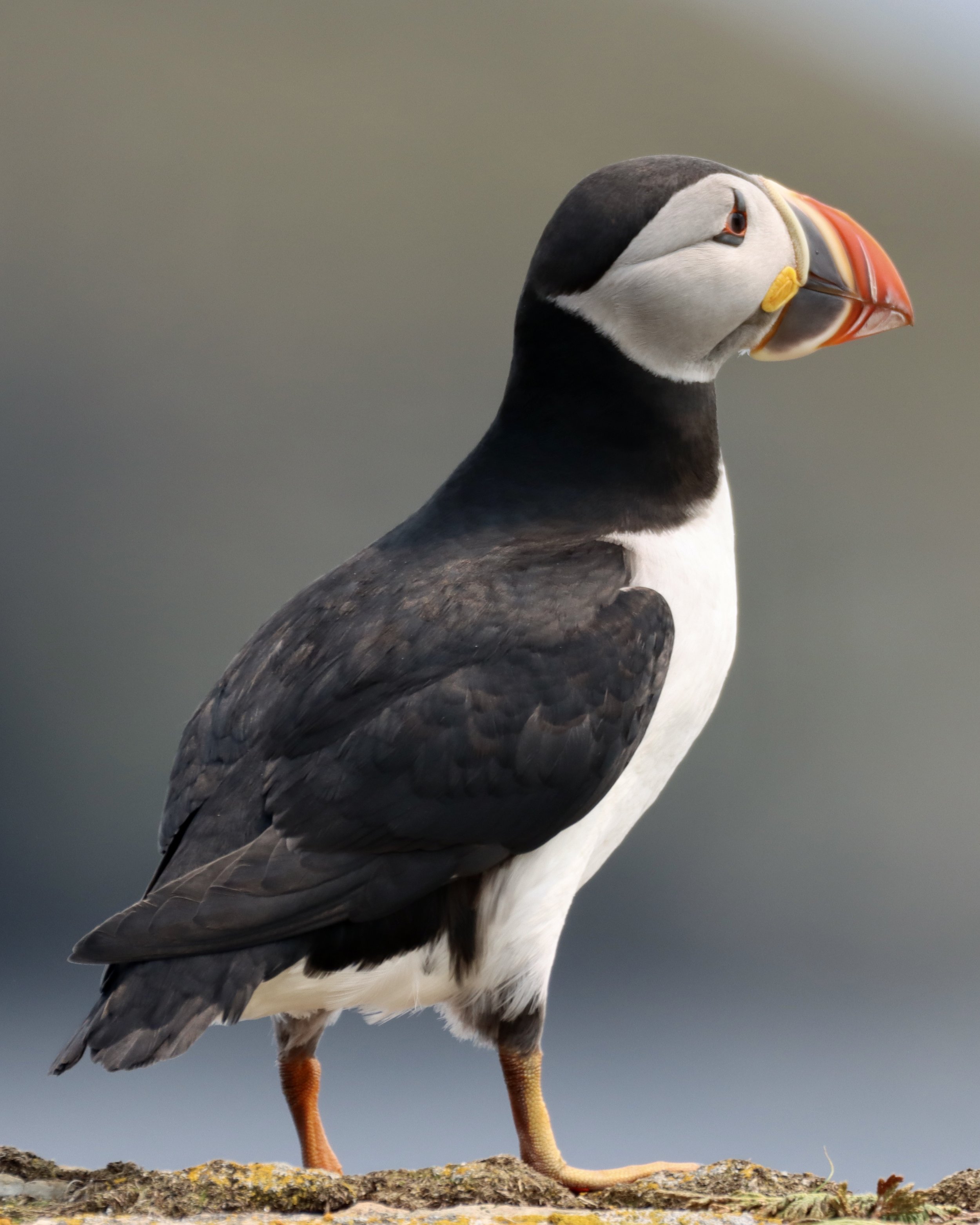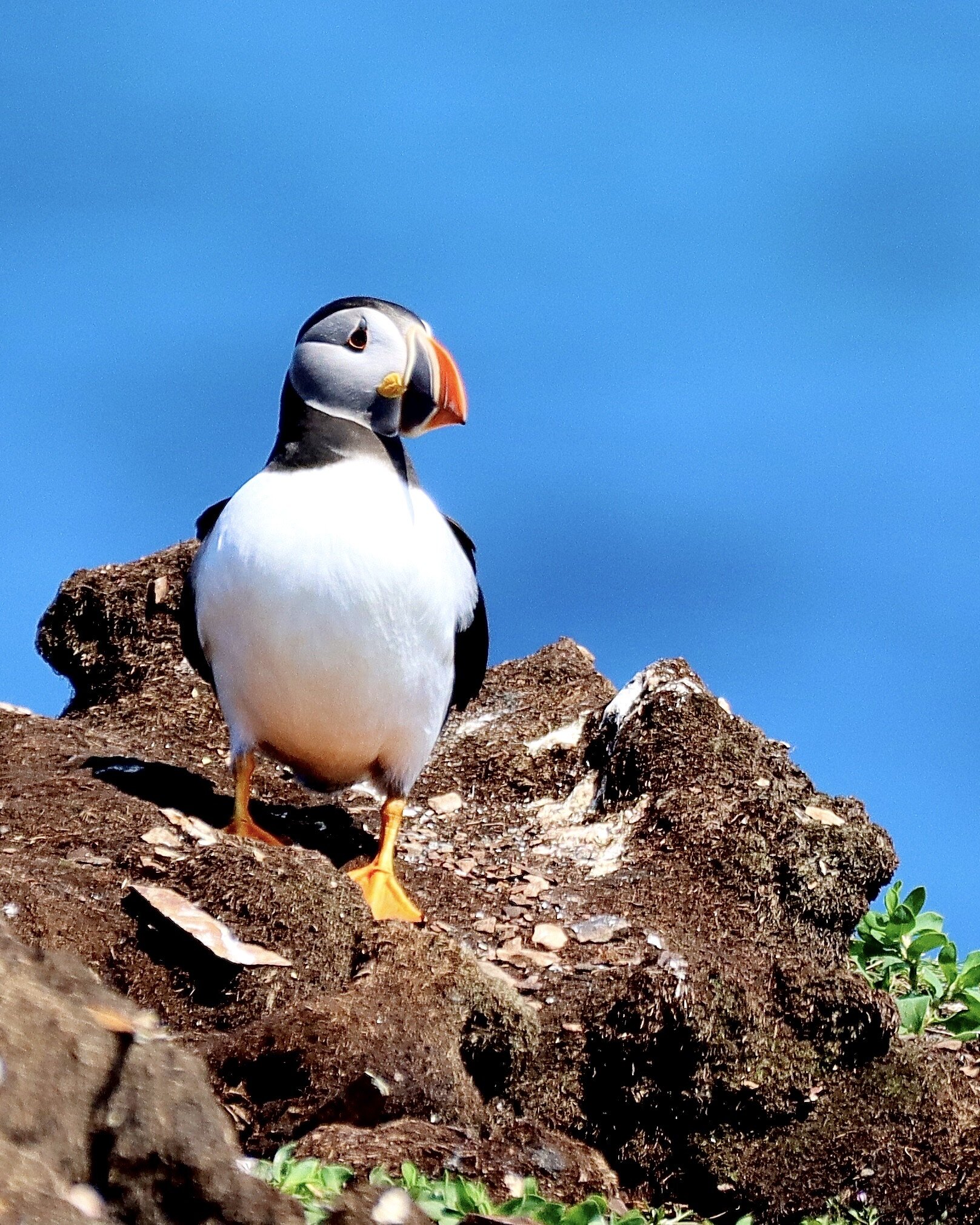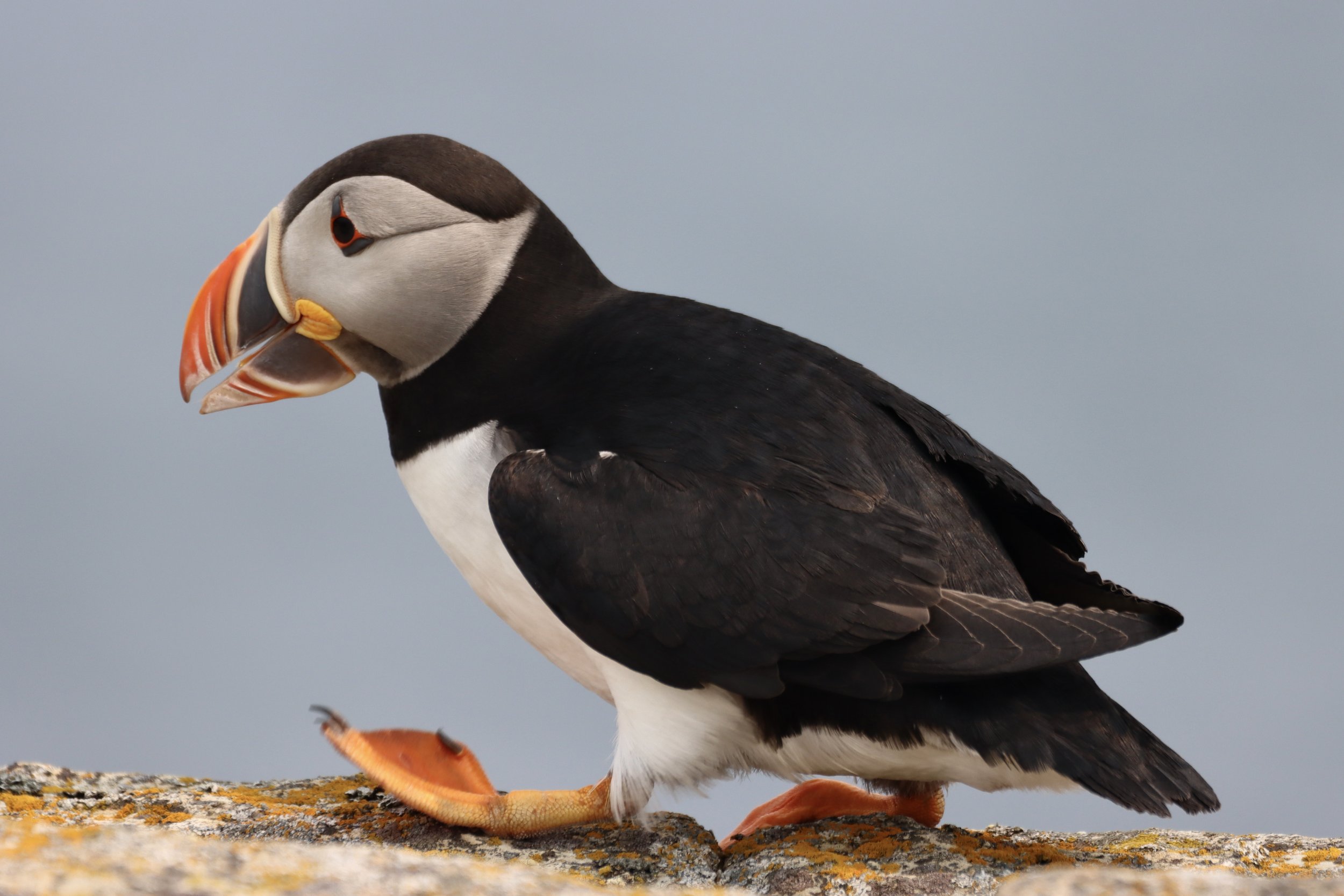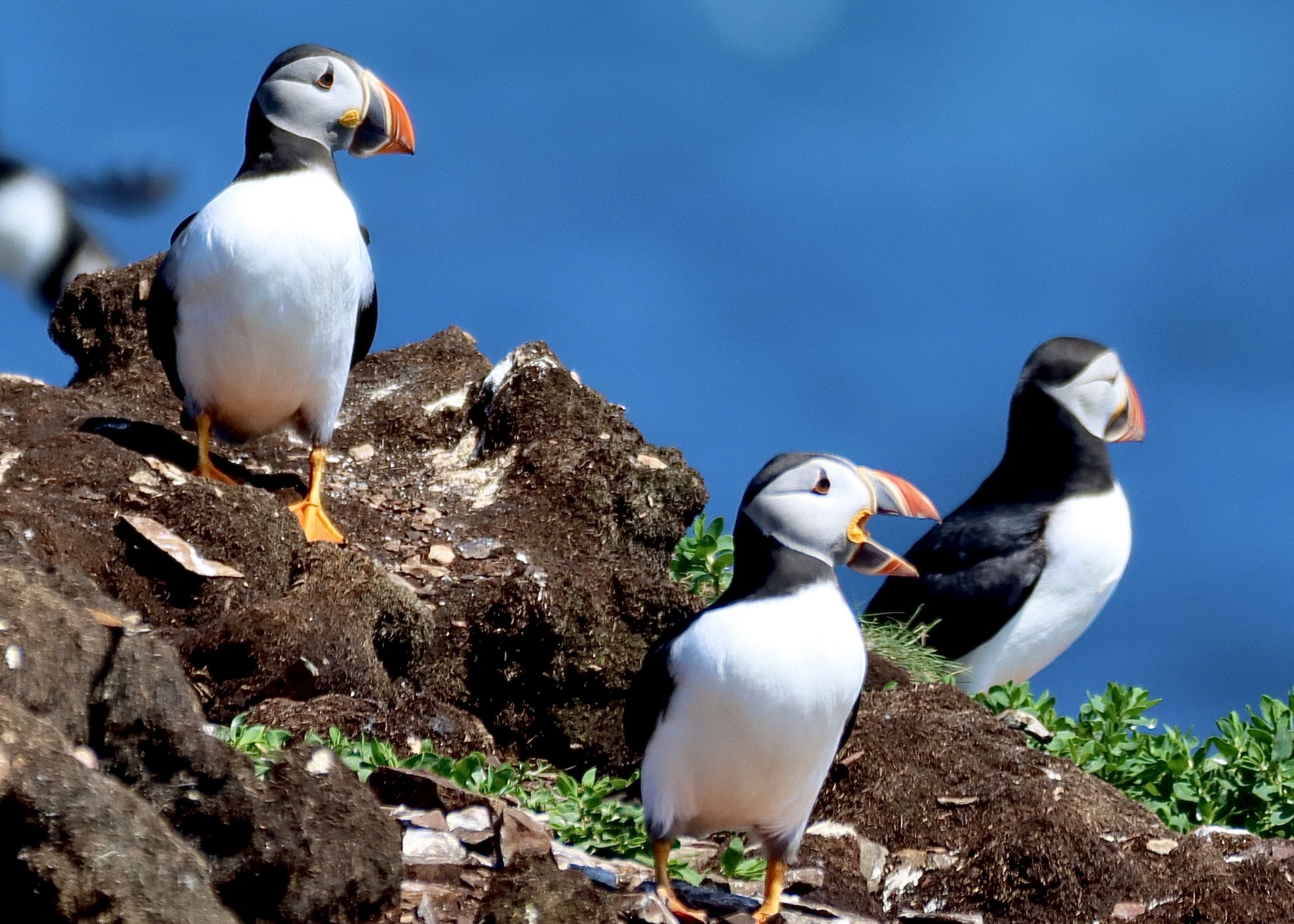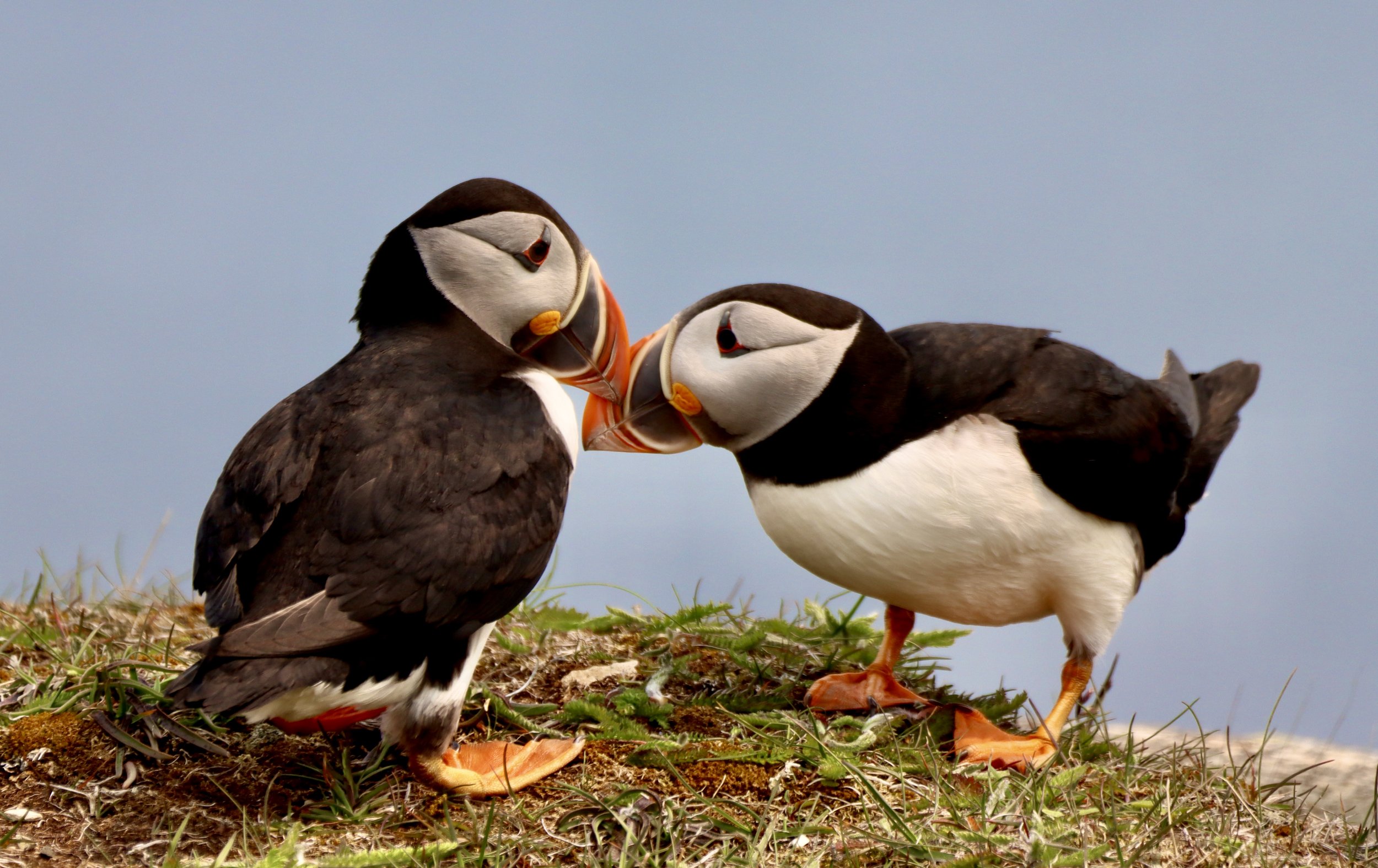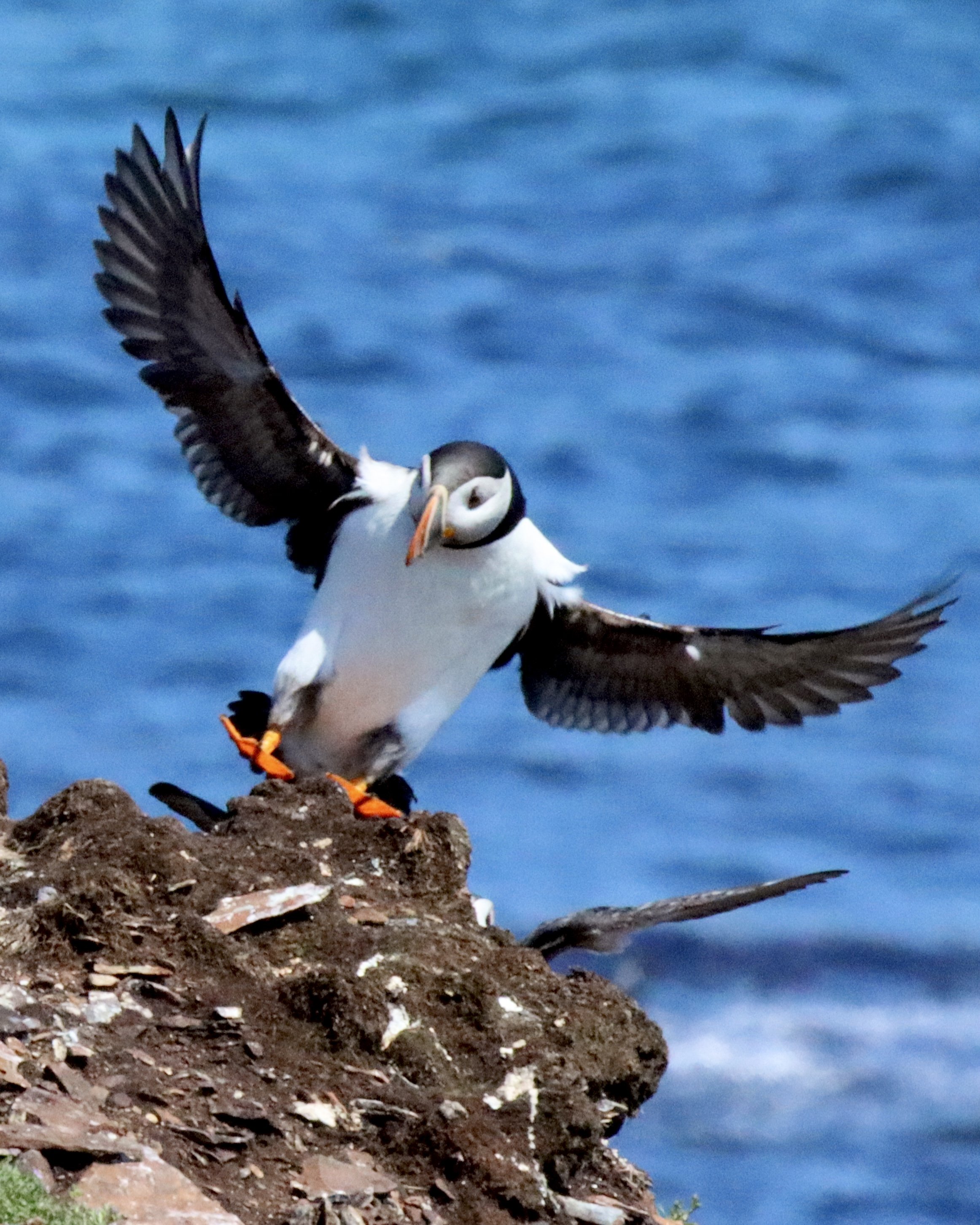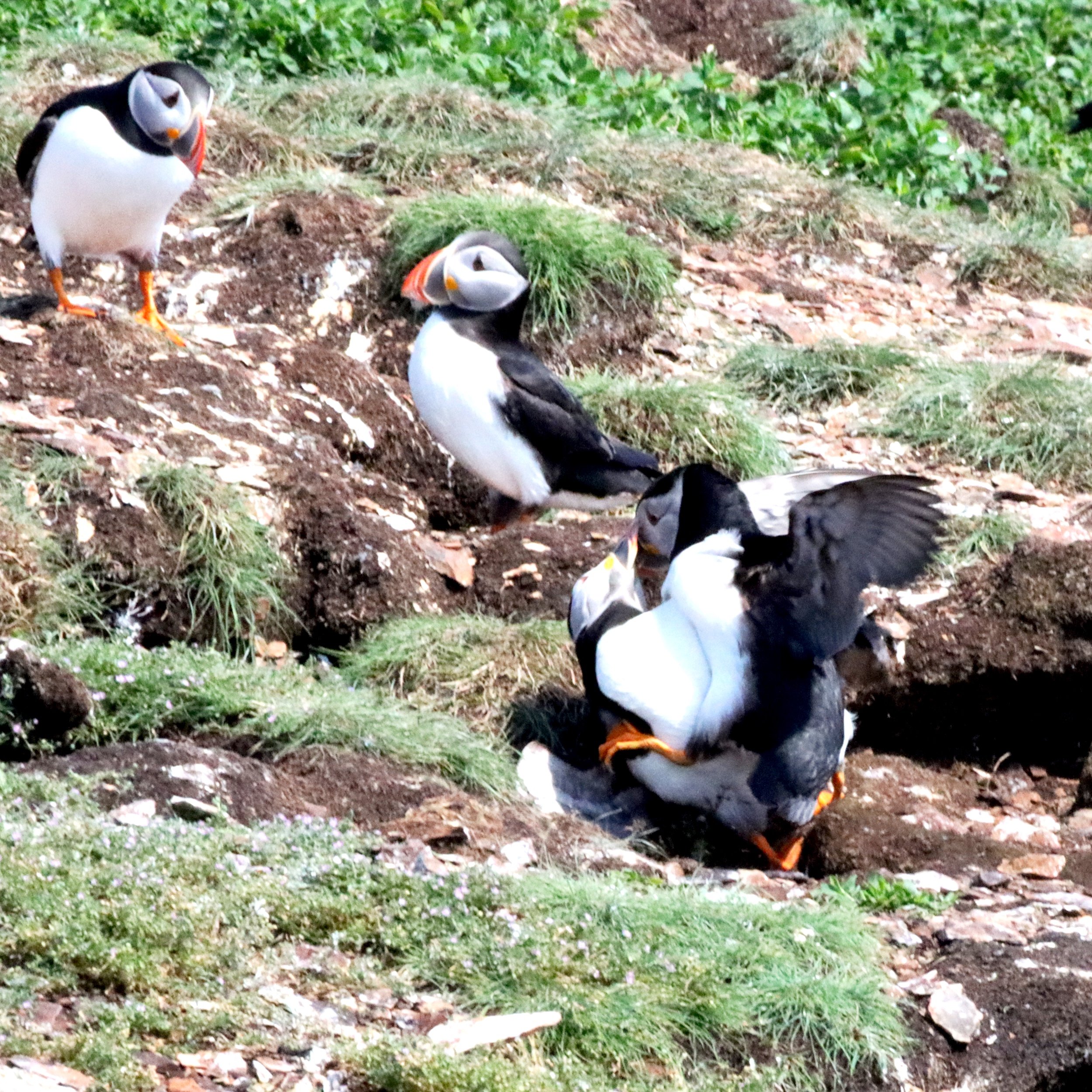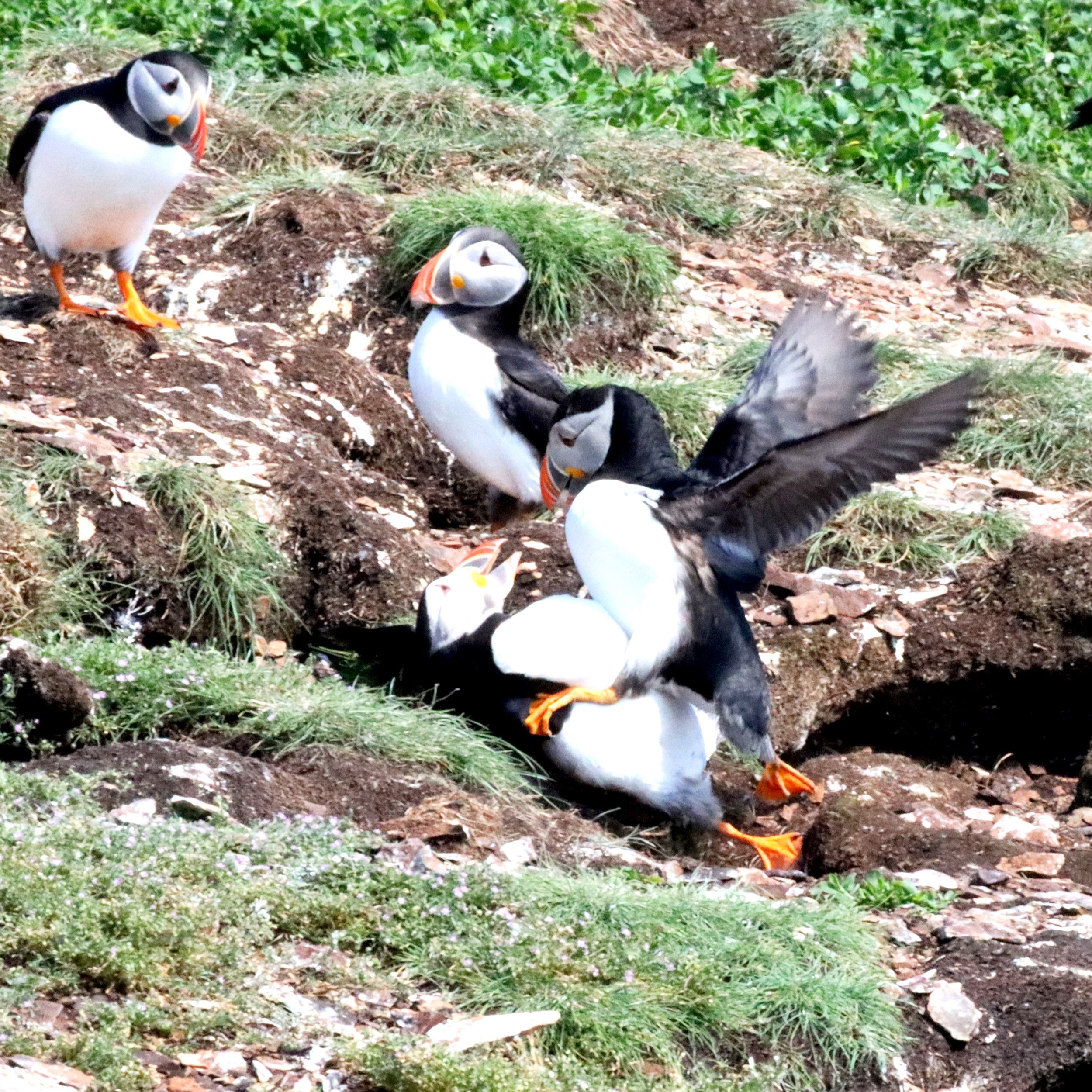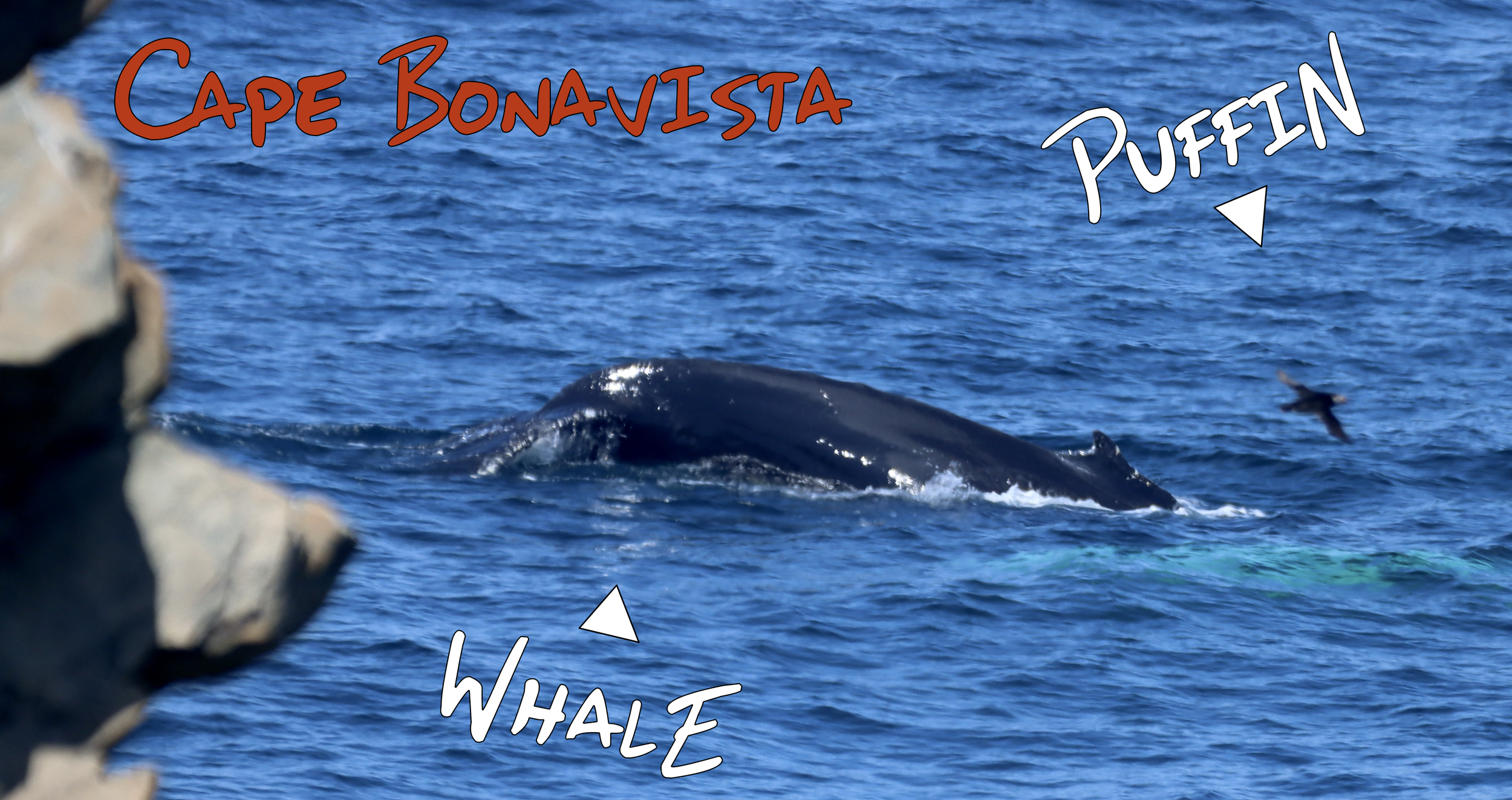Nothin’ But Puffin
Atlantic Puffin, Elliston, NL
They may be tiny but the colourful little Atlantic puffin is a pretty big deal in Newfoundland and Labrador.
For starters, they are the official bird of the province but they did have some competition earning that title (more on that in a minute).
Puffins are a staple in Newfoundland and Labrador tourism ads, they’ve become mascots of our sports teams and the subject of media attention. They may be our last living celebrity species, without a blowhole. As it turns out, they really might be worth the attention — they are pretty cool little animals.
The Provincial Bird of Newfoundland and Labrador
The puffin has been a popular symbol of the Newfoundland and Labrador for a long time but it was only officially recognized as the provincial bird 30 years ago.
It wasn’t the only bird under consideration. Besides the puffin, the short-list of contenders included the common loon, thick-billed murr (aka turr), osprey, eider and ptarmigan/partridge. A survey was conducted and a sizable majority supported adopting the puffin as a provincial emblem. The loon and the osprey achieved silver and bronze standing, respectively.
In 1992, the provincial government passed the Avian Emblem Act making it official — the Atlantic puffin would be the bird of Newfoundland and Labrador.
And, if the province likes puffins, it’s fair to say the puffins like the province — over 95% of North America’s Atlantic Puffins breed off the coast of the province (according to gov.nl publications), with around 60% of them choosing just four islands in Witless Bay.
Why Are They Called PuffinS?
Scientifically speaking, the name of the Atlantic Puffin is the Fratercula arctica. Fratercula means "little brother" or "friar.” It’s likely a reference to their black and white colouration, which some saw as monk-like. It has also been suggested that the puffin’s occasional habit of holding its feet together on take-off is reminiscent of hands clasped in prayer. That said, I scoured my hundreds of puffin pictures and I can’t find a single image that remotely makes me think of ‘hands clasped in prayer.’
-
In Newfoundland the word puffin has been applied to more than just birds.
The harbour porpoise is sometimes called a puffin, like due to the puffing noise it makes when it surfaces to breathe.
There is a species of sculpin also referred to as a puffin.
Even people have been labeled as puffins. According the Dictionary of Newfoundland English, Puffin is a nickname for a resident of Ramea. I don’t know if they like being called puffins, so I’d urge caution before putting that piece of trivia into action.
The term puffin comes from Middle English and originally referred to the Manx shearwater. It was a reference to their fat, downey chicks that inspired comparison to a puff, leading them to be called puffing, and later puffin’. It’s was probably just confusion that led to the shift of the name from shearwaters to modern puffins — they have similar nesting habits and habitat.
In Newfoundland puffins have been called sea parrots, paroqueets, Baccalieu birds and, not very flatteringly, hatchet-faces.
What’s A Group of Puffins Called?
If a flock of crows is a murder, a group of starlings is a murmuration, and a branch-full of owls is a parliament, what do you call a rock filled with puffins?
It depends on who you ask.
Most commonly, a breeding group of puffins is referred to as a ‘colony.’ That’s pretty boring as collective nouns go, but there are other more interesting —if less common — options.
When they are on the water a group of puffins is sometimes called a “raft.” On land, because of their habit of nesting in holes in the ground, a group of nesting puffins has sometimes been referred to as a ‘burrow.’ They’ve also been called a ‘puffinry.’ On the more whimsical side, the clown-like colours of the Atlantic Puffin’s bill have lead some to call them a “circus.”
Puffins in Elliston, NL
A 2016 article by Flora Baker in National Geographic suggests a group of puffins could be called an “improbability.” Improbably, this idea seems to have gained some traction and can be found in multiple websites.
Puffin chicks are known as “pufflings.”
Lovers and Fighters
Whatever you call a group of Atlantic Puffins, the truth is the main reason we talk about them at all is their love life.
It’s mating that brings the birds to colonies on Newfoundland and Labrador’s coastline. It’s even their love life that makes them so photogenic.
The Atlantic puffin undergoes a major glow-up for mating season. In fact, it changes so much that it was once thought to be two different birds. It is only during mating season that it develops the iconic clown-like colour. Bright coloured patches appear on the puffin’s cheeks, its bill takes on yellow highlights and it’s feet turn bright orange. These features disappear when mating season is over. In fact before winter sets in the puffin sheds part of its bill, leaving behind a smaller, dull coloured beak. Check out this image from All About Birds of an Atlantic Puffin without its breeding colours.
Once the puffin finds a mate, it mates for life (which can be for more than 20 years). Year-after-year, puffin couples return to the same burrow, lay a single egg and take turns incubating it.
It's not all Leave it to Beaver, though.
Whichever parent is not egg-sitting is probably at the fights. Puffins are fighters and, not only do they like a chance to knock ‘em down and drag ‘em out, they love to have ring-side seats when their neighbours do it.
Life is an all-round struggle for puffins really. The birds aren’t great fliers and often crash while trying to get airborne. It’s especially difficult for the young, who often struggle to get safely from the nesting burrows. Sadly, many don’t make it and even those who do take to the air are sometimes drawn to the lights of communities rather than the open sea.
In Newfoundland a team of volunteers work to help the stranded puffins. Check out the story in Scott Dobson’s documentary Puffin Patrol (rescues are discussed at about the 42min mark).
Where to see puffins?
As mentioned, during the summer months, as many as 95% of the Atlantic puffins in North America breed off the coast of the province, with around 60 percent of them choosing islands in Witless Bay off Newfoundland’s Avalon Peninsula. So that’s a good destination.
That said, my favourite places to view puffins are in Elliston and Cape Bonavista on the island’s Bonavista Peninsula. Both puffin sites are accessible by car/foot. In Elliston there is a very short walk to the colony. At Cape Bonavista the small colony of puffins is maybe a dozen meters from the parking lot at the historic lighthouse.
I took all the puffin pictures for this article at these two sites.
One further note, while the colony at Cape Bonavista is smaller it does come with some impressive extras. First, there’s a beautiful historic lighthouse that is immediately to the right of the puffin colony. Second, on my last two visits, there were so many humpback whales that I kept having my attention drawn from the birds.
I keep telling people that Cape Bonavista is a very efficient way of getting the whole NL tourism commercial experience — puffins, whales and lighthouses — in one stop!
-
Puffins at Hinterland Who’s Who.
Scott Dobson, Puffin Patrol documentary.
Puffins, Nature Conservancy of Canada
